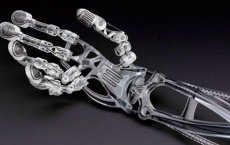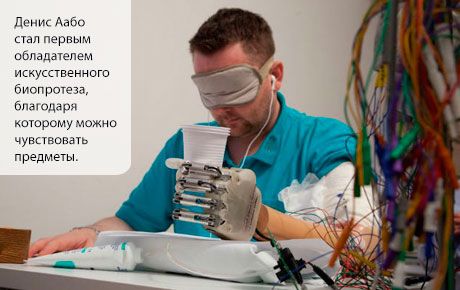New publications
Scientists have implanted an artificial hand that allows you to feel objects
Last reviewed: 01.07.2025

All iLive content is medically reviewed or fact checked to ensure as much factual accuracy as possible.
We have strict sourcing guidelines and only link to reputable media sites, academic research institutions and, whenever possible, medically peer reviewed studies. Note that the numbers in parentheses ([1], [2], etc.) are clickable links to these studies.
If you feel that any of our content is inaccurate, out-of-date, or otherwise questionable, please select it and press Ctrl + Enter.

Danish resident Denis Aabo, who lost his arm in a fire several years ago, thanks to scientific developments and the efforts of Italian surgeons, became the first owner of an artificial bioprosthesis, thanks to which one can feel objects. The signal to the brain comes from special sensory sensors connected to nerves.

This unique prosthesis was developed by surgeons from Italy, who managed to connect special sensors with multiple nerve endings in the shoulder, due to which the brain begins to receive the corresponding signals. As Denis Aabo notes, with his “new hand” he can determine objects by shape or hardness, without even looking at them, and also feel heat and cold.
Neurosurgeons have done a tremendous job – they have attached thousands of sensors to the nerve endings of Denis’ shoulder. Denis uses the bioprosthesis as if it were his real hand and as he noted, after 9 years of not having his real hand – the sensations with the prosthesis were simply amazing.
As the developers of the unique device suggest, the bio-hand may appear on the market in five years. The device still requires improvement, it is necessary to adjust the accuracy of movements and manipulation abilities, and only then will it be possible to talk about the mass implementation of such operations.
Scientists have always paid special attention to the development of limb prostheses. This was primarily due to the numerous injuries of soldiers. The most high-tech prosthesis was developed at one of the universities in the United States. This development was financed by the Department of Defense. The bionic hand prosthesis has almost the same dexterity as real hands, while each finger of the prosthesis can move independently of the others. The prosthesis is implanted in the remaining part of the hand and reacts to muscle contractions, while a weak signal is sent to the sensors, due to which the prosthesis reacts, for example, by clenching a fist. Developments on this prosthesis continue, and researchers have managed to achieve that a person can stroke a real hand with an artificial hand using his mind. However, it is impossible to feel an object with such a prosthesis.
Currently, prosthetic legs are already in use, which, due to lightweight materials and improved technologies, closely imitate the movements of real legs. Currently, the most high-tech prosthesis is the Genium prosthesis, which went into production in Britain back in 2011. The prosthesis has seven sensors, including a speedometer and a gyroscope, which allows you to determine the position in three dimensions. A special computer is built into the prosthesis, which controls the hydraulics and monitors the movement of the prosthesis. Thanks to all these developments, the prosthesis reacts to movements in different ways, for example, when moving backwards or on steps, as well as to the speed of walking. The cost of such a prosthesis is about 80 thousand dollars, which also includes a guarantee and technical maintenance of the prosthesis for a certain period of time.
Scientists have always wanted to recreate such a complex mechanism as the human body. Modern materials and electronics allow replacing not only damaged or missing limbs, but entire organs.

 [
[